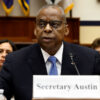First, the good news. The economy is unmistakably regaining some of its mojo. We picked up another 214,000 jobs in October, according to the Labor Department, and with revisions from previous months, the number was closer to 250,000. Now THAT’S more like it.
The stock market is on a raging bull ride, too. We keep adding wealth—at least on paper. That’s good for retirement funds, 401k plans and individual investors.
On the jobs front, hiring was seen in nearly every occupation from construction to nursing, to business services and retail all the way down to burger flippers. But too many of the new jobs are low paying, and that is a continued frustration for workers.
The truth is, though, if you have a useful skill—any useful skill—you can probably find a job these days.
We learned recently that the unemployment rate had ticked down to 5.8 percent, but that number has become a standard joke among Americans looking for a job—or those looking for a better job.
We still have 2.2 million adults who have simply given up looking for a job. Only a little more than six in 10 Americans eligible to work are actually working.
That’s bad.
Family incomes can’t rise over time unless someone in the household is earning a paycheck. Welfare payments can’t—or at least shouldn’t—substitute for work.
OK, so businesses are profitable, stocks are soaring, and jobs are coming back. Hmmm. If things are so good, why are we all feeling so gloomy and anxious?
Why did we hear a primal scream of anger from voters about the condition of the economy? How can two of three of us say things in America are going in the wrong direction?
Three reasons:
First, wages just can’t seem to keep pace with inflation. This is the middle class squeeze that Senator Rand Paul, R-Ky., talks so much about—and he’s right.
Wages are up 2 percent over the last year. But I’ve argued on these pages that the official inflation rate of just under 2 percent doesn’t match the higher costs of things Americans are buying—health care, tuition, food, and until recently, gas. These inflation rates are closer to 4 percent. The take home pay isn’t taking workers home.
Second, there’s a leadership crisis. Government is regarded with mistrust and disdain after the IRS scandal, Bengazi, the NSA scandal, the mishandling of Ebola and the failure of Obamacare to properly launch. Young people can’t understand how the feds can’t even run a website.
Meanwhile thugs such as Russian president Vladimir Putin kick sand in our face like we’re the weakling on the beach.
Too many of our kids are graduating from college with degrees in psychology or political science or ethnic studies without knowing how to do anything valuable to employers—even change a light bulb.
Finally, there is the $10 trillion time bomb. That’s the combination of $7 trillion in new federal government debt and then another $3 trillion in cheap money from the Federal Reserve. This feels to people like an economy built on sand. This story of financial recklessness usually doesn’t have a happy ending.
But for now at least, things are getting better—slowly.
I’m one who thinks the best is yet to come, and that’s in part because voters had the courage to tell their elected leaders in Washington and city hall: You’re fired. This could be the start of something big.
Originally appeared on FoxNews.com.

























